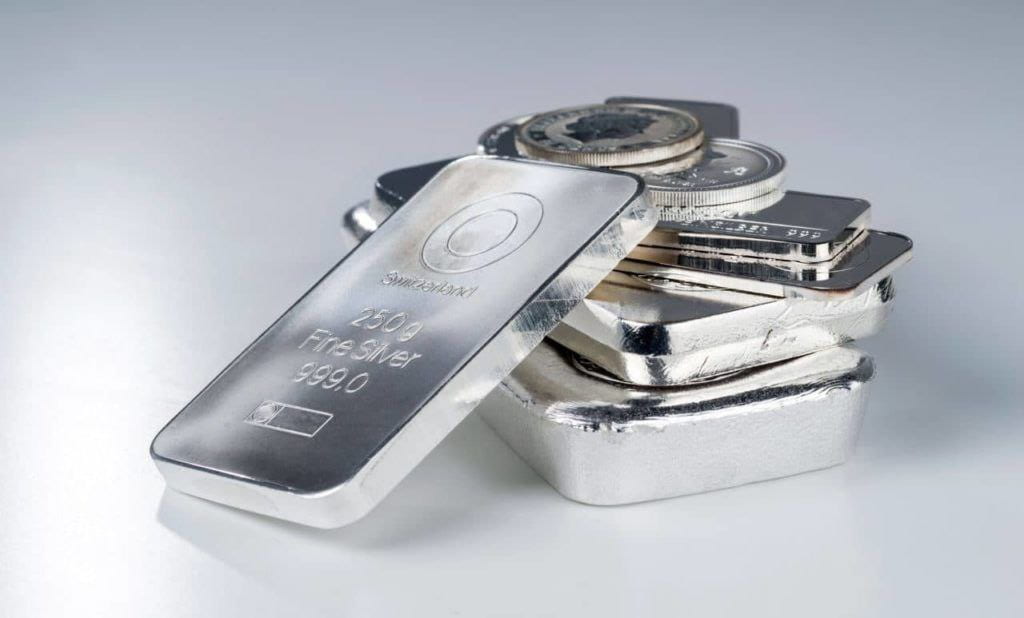
- Investment ideas
- Tools and platforms
- Trading basics
What you need to know when trading silver
Do you want to know how to make money from this?
Register for free and get expert advice, access to a training course and webinars.
The famous jewelry brand Pandora announced its optimistic plans and forecasts for the period 2024-2026. After this, the company’s shares at the opening of the session on the stock exchange rose by 0.5%.
Hence, it is opportune to discuss the prospects of investing in precious metals, with a particular focus on silver. As the second-most sought-after precious metal after gold, silver holds a distinguished position among assets that captivate investor interest. Throughout centuries, silver has played multifaceted roles, serving as a form of currency, adorning jewelry, and establishing itself as a dependable means to preserve capital over extended periods.
In the present day, investors and traders have a plethora of silver-related instruments at their disposal to pursue their financial objectives. These instruments encompass futures, options, exchange-traded funds (ETFs), and over-the-counter products like mutual funds.
Silver futures trading
Silver futures contracts are actively traded on various global exchanges, each adhering to standard specifications. A case in point is the trading process on the COMEX, a division of the Chicago Mercantile Exchange.
At the COMEX, a standardized silver futures contract is available in three options, distinguished by the quantity of troy ounces of silver, with 1 troy ounce equivalent to 31.1 grams:
- Full contract (5000 troy ounces of silver);
- E-mini contract (2500 troy ounces);
- Micro contract (1000 troy ounces).
Futures trading on the COMEX involves the use of leverage. For instance, engaging in a full silver futures contract requires a fixed margin of $9,000. This implies that maintaining a margin of $9,000 is sufficient to establish a position in the full silver futures contract.
It is crucial to note that each futures contract is secured by physical refined silver, commonly referred to as bullion. This silver undergoes testing to ensure a fineness level of 0.9999, and it is duly stamped and serialized by an approved entity listed by the exchange.
The role of the exchange in silver futures trading
Trading silver futures through an exchange provides the following:
- Standardization: uniform contract sizes;
- Reliability: safe and regulated market, protection from counterparty risks;
- Transparent pricing: access to pricing information up to 60 months in advance;
- Flexibility: arbitrage without owning physical silver, the ability to open short positions;
- Availability: long trading time (almost 24 hours).
The advantages of silver futures make this instrument attractive to both experienced traders and novice investors.
Players in the silver market
Silver prices have experienced increased volatility in recent years, placing it somewhat outside the generally accepted criteria for a “safe” asset. This makes silver an attractive but also risky trading instrument.
The main factor driving silver price volatility is the growth in industrial demand and the gradual change in the energy mix. There are a number of factors contributing to potential asset price increases:
- Development of electronics and automobile industries: These industries are large consumers of silver and their growth will increase demand for it.
- Rising oil prices: may stimulate the search for alternative energy sources, such as solar energy, which uses silver in its production.
- Investment Demand: Silver, like other precious metals, has traditionally been viewed as a safe haven asset during periods of instability.
Do you want to know
How to make money from the news
Register for free and get:
- Expert consultation;
- Access to the training course;
- Opportunity to participate in webinars

